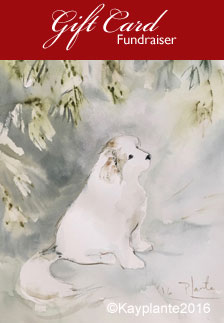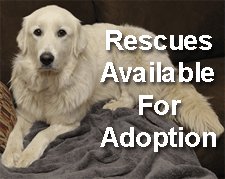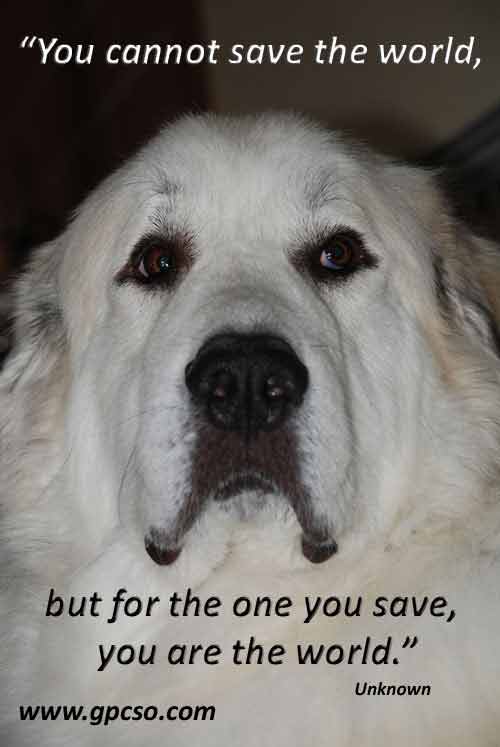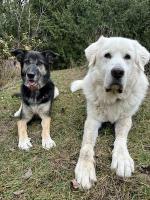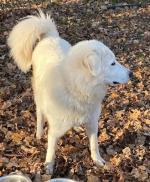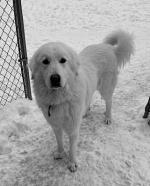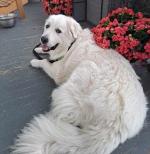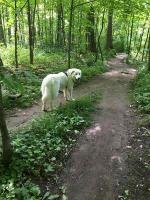Top 12 Great Pyrenees Questions Revealed Here
When you are out with your dog, Great Pyrenees questions are the rule of the day. There is no doubt that big dogs draw lots of attention. Club members tell us, that whenever they are with their Great Pyrenees Mountain Dogs and are meeting people who are familiar or unfamiliar with the breed, there tends to be a lot of interest and… a lot of questions, particularly from those meeting a Great Pyr for the first time.
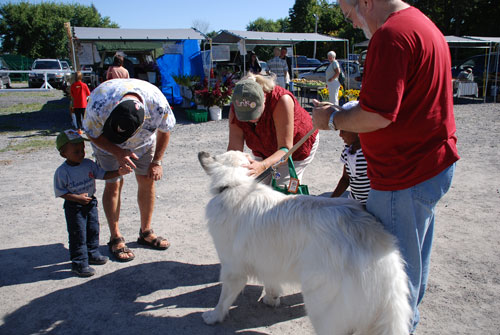
Great Pyrenees questions tend to follow a certain pattern, and over time a “Top Twelve” list has emerged. And it really doesn’t matter where you are.
We used to take our Great Pyr, Gus to the Carp Farmers Market, near Ottawa, every Saturday where he was met by hundreds of people and yes, just like Club members in Southern Ontario and elsewhere, these are the Great Pyrenees questions that we were most often asked.
So, since everyone wants to know about these big dogs, you may want to know as well.
Drum roll… as David Letterman would say: “Here are the Top Ten Most Often Asked Questions About The Great Pyrenees Mountain Dog.” But wait! We will do even better than that! Here are the Top TWELVE Most Often Asked Great Pyrenees Questions.
13. Do they bark much?
12. Look… he has extra toes on his back feet! What are they all about?
11. Is it a lot of work to keep his coat clean?
10. How are they at obedience work?
9. How long do these big dogs live?
8. What were they used for?
7. Are they good with kids?
6. Do they drool like that all the time?
5. Do they need lots of space and exercise?
4. Do they shed a lot?
3. How much do they weigh?
2. How much do they eat?
1. Is that (a) a Saint Bernard (b) a white Newfoundland (c) a small horse (d) a Polar Bear?
Now of course, all good Great Pyrenees questions deserve good answers...
...and the answers to those Great Pyrenees questions are:
13. They bark more than most dogs since this is a tool of their trade. They bark to deter predators including butterflies two miles away. This dog was 'created' by man to watch over livestock without human intervention except for some love, grooming, health care, and to be fed and watered. Without this tool, they cannot do their job. NEVER debark any dogs. If you can't handle the barking, this is not the dog for you.
12. The Great Pyrenees has double dewclaws on his back feet and single dewclaws on his front feet. These dewclaws must not be removed and the dog cannot be shown if they are. It is believed that the double dewclaws help the Great Pyr maintain stability when working in rough, hilly terrain and also provide a snowshoe effect in deep snow. It is important to keep all nails trimmed regularly to avoid nails growing into pads. Here is more
11. The Great Pyr has a double coat. The outside layer has long, straight or slightly wavy hair while the undercoat is a soft down which protects these big dogs from water, cold and to some degree, heat. Brushing once or twice a week is all that is required since the dirt falls out of the hair as it dries… these are “self cleaning” dogs. The undercoat has to be slicker brushed and combed weekly to prevent matting, and particularly during the spring and fall as the dog “blows” coat. Never shave these dogs. If you don't like to groom, engage a master-groomer.
10. On their home turf, the Pyrenees Mountains, Pyrs were often left alone with their shepherds for days in the mountain meadows, guarding their livestock. As a result, Pyrs think for themselves, a trait which is often mistaken for stubbornness or lack of intelligence. Nevertheless, these big dogs often finish with top marks in obedience classes, knowing the routines inside and out, though they are very selective about when THEY want to do them.
9. The correct medical answer is 10 –16 years, and even older given the right diet (raw which is species appropriate) and minimal pharmaceutical interventions. The Pyr owner’s answer is - Never Long Enough.
8. Pyrs have been used for many centuries to guard flocks and herds from predators – originally, wolves and bears. They are still used to guard flocks today from all wild life, including coyotes, wolves and wild dogs.
7. Natural guardians, Pyrs often seem to know instinctively that children are to be protected, and are endlessly patient with them providing they are mentally stable. To ensure the best relationship between child and dog, and to foster the dog's good nature and sound temperament, parents must educate their children as well as the new pup. Never leave any dog alone with children.
6. Drooling is caused largely by droopy flews (lips), which the breed standard frowns upon. But any dogs with soft lips, such as retrievers, will drool somewhat when they're hot or drinking.
5. A pen and/or securely fenced yard of a minimum of 5 feet are an absolute necessity for these big dogs, who like to roam if allowed. A Pyr must also get at least long ong walk daily. They should go out at wakeup time, noon, after work and before bed to do their business. Pyr ownership is GREAT for your health!
4. Pyrs molt twice a year; heavily in spring, when the warm weather arrives, and more lightly in autumn. If kept indoors, the dog will shed lightly all year round. The hair can be carded, spun, and woven into beautifully soft and very warm mitts, socks, headbands, and even sweaters.
3. Males average 100 to 120 pounds; females average 85 to 100 pounds.
2. Actually, not as much as other big dogs. They eat 2% of their body weight, but they will only eat as much as they need.
Feeding a species-appropriate diet is the best you can give your dog. This means a raw diet. Read more about it here. This breed eats what they need. They may even skip a meal now and again.
Kibble is a highly processed diet
1. (a) No (b) No (c) No (d) No
Do you have more questions?
Select the most appropriate heading below.
Behaviour • Diet • Education • Exercise • Grooming • Other
Return to the Pyr ownership Page.
Breaking News
-
Courtesy - Bear
Apr 09, 25 09:09 AM
Bear DOB: October 2018 Location: Midland, Ontario Pyr/Maremma? mix Single family home with a large securely-fenced property or a hobby farm. Purchased/adopted -
Courtesy Post - Willow
Apr 09, 25 09:07 AM
DOB: March 26th, 2022 Location: London Ontario Cross Pyr/Collie Obtained her privately through a friend. How long have you had her? 10 months Spayed -
Lucy
Apr 09, 25 09:06 AM
*Foster-to-Adopt* or *Foster* DOB: January 3, 2024 Location: Acton, Ontario She will need a single-family home with a securely fenced yard of at least -
Remi
Apr 09, 25 07:44 AM
Location: Acton, Ontario DOB: February 2024 This sweet white fluffy Remi has a sad story. Remi, while his family was in the midst of moving, escaped and -
Grieving Dog
Apr 04, 25 06:17 PM
Background: I am seeking some feedback if anyone has had experience with bonded pairs. Thank you! We have been fortunate to love 2 x almost 10 year -
Leo
Mar 12, 25 06:32 AM
*ADOPTED* DOB: September 2023 (almost 1.5-years-old) Location: Acton, ON Single family home with a securely fenced yard required. This sweetheart was -
Buster
Mar 10, 25 03:36 PM
*Buster is going back to his original family as things have brightened up in their lives and he'll have a wonderful life on acreage.* Buster had to come -
Courtesy - Maya
Jan 08, 25 05:35 PM
*ADOPTED* Location: Dunnville, ON DOB: Jan. 3, 2021 (3.5 years) Spayed Companion Dog, Pyr mix Good with children. Single family home. Raw diet (species-appropriate)

